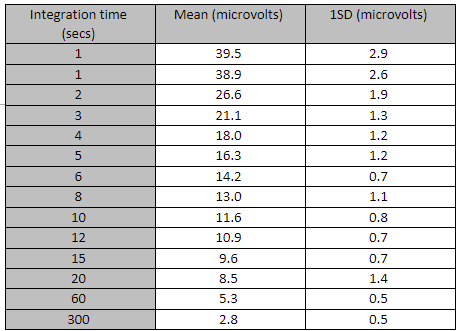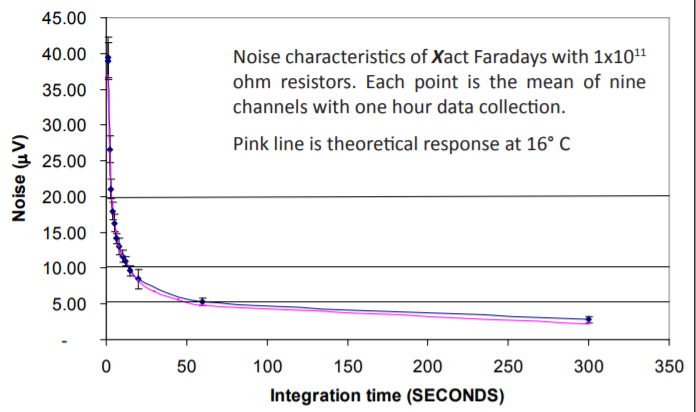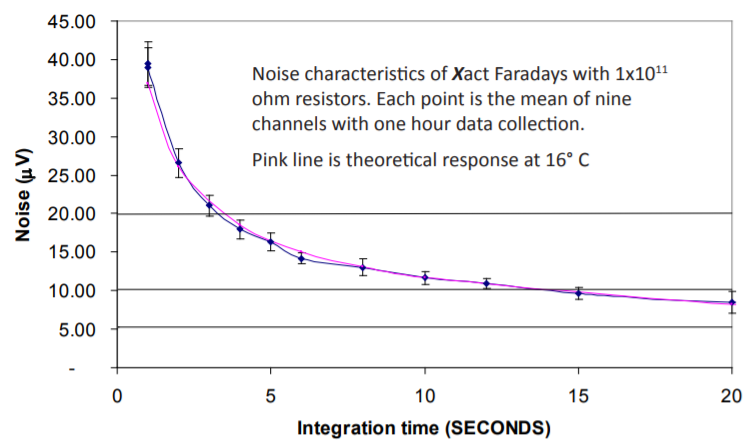Introduction
High precision isotope ratios require an optimal signal to noise ratio. Here we assess the electronic noise of the new Xact Faraday detectors on Phoenix TIMS using a range of different integration times and compare the results to the theoretical noise calculated from the Johnson law.
Experimental
Phoenix has nine Faraday collectors each directly connected to its own resistor/amplifier circuit board. The boards slot into in a Peltier cooled (16o C) and evacuated housing situated immediately above the Faraday collector block.
Baselines were measured on nine Xact Faraday collectors fitted on a Phoenix TIMS using a number of different integration times over an hour (see Table 1). The average and standard deviation of the nine data sets provides a representative value for the noise characteristics at that integration time, together with the variance. These results are presented in Table 1 and in Figures 1 and 2. The data are presented in microvolts where 10 microvolts is equivalent to 1 x 10-16 amps.
Johnson Noise
The theoretical thermodynamic limit of noise in a resistor is defined by the Johnson Law …

Where kB is Bolzmann constant = 1.38 x 10-23 Joules per Kelvin. T is the temperature on the resistor in Kelvin (in this case 289K), R is the resistance of the resistor in ohms (1 x 1011). For different integration times (t) this can be simplified to:
Noise = √(4 x kB TR(1/t))
Figures 1 and 2 show the theoretical noise shown in pink for different integration times. It can be seen that the noise levels of the new Xact Faradays are at the predicted level irrespective of the integration time.
Conclusions
Noise levels of the new Xact Faraday/Resistor/Amplifier detectors are close to the thermodynamic theoretical limit calculated from the Johnson equation.



Download Technical Note
Download the complete Technical Note: Noise Characteristics of Phoenix TIMS Xact Faraday Detectors